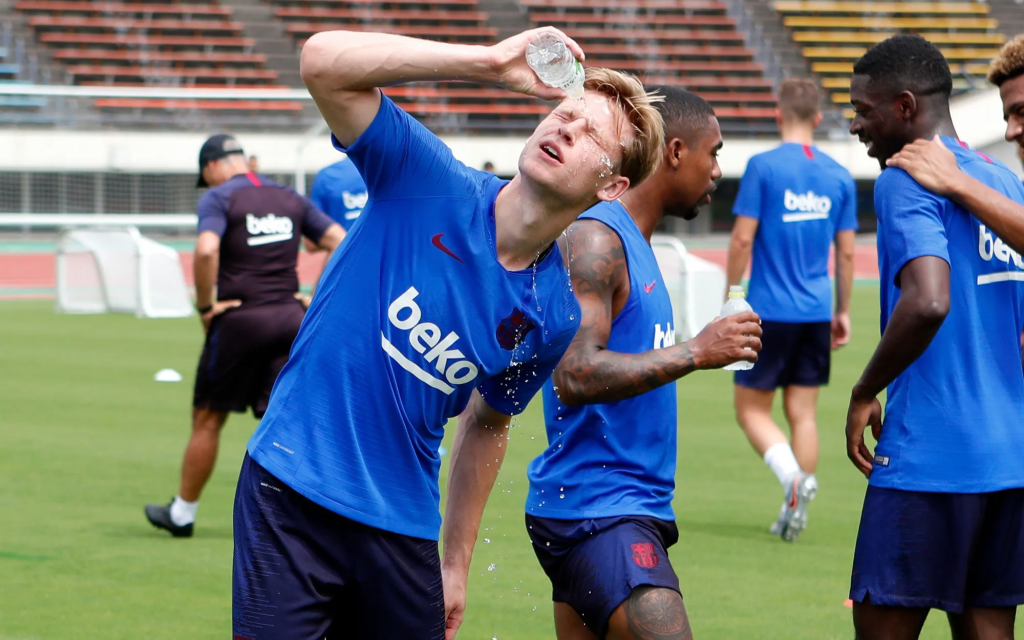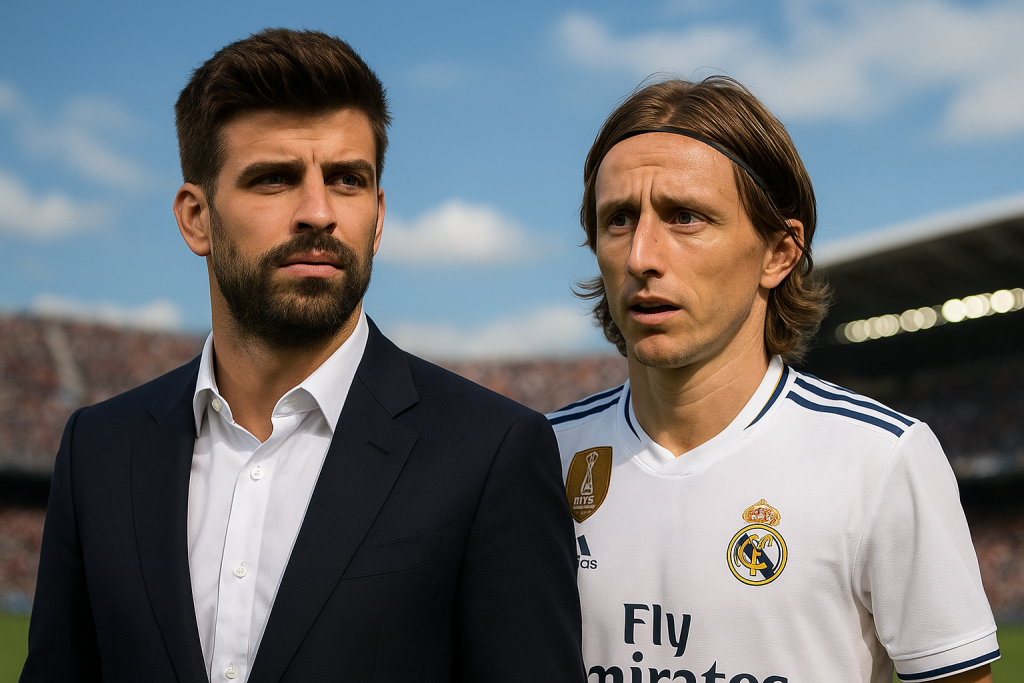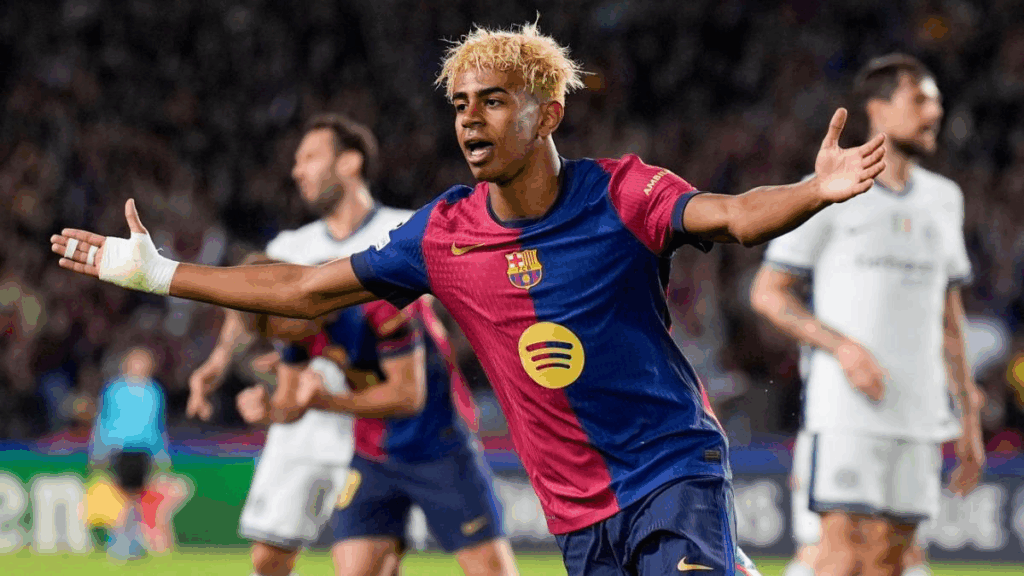Football training in hot weather is a challenge for every player. The ball moves faster, the body tires quicker, and the sun tests your discipline. But if you prepare smartly, summer training can actually become your biggest advantage. Let’s dive into how to stay strong, hydrated, and sharp when the temperature rises.
FIFPRO’s position on extreme heat
When it comes to football training in hot weather, official rules are still catching up with reality. At present, FIFA guidelines only require cooling breaks if the Wet Bulb Globe Temperature (WBGT) rises above 32°C (89.6°F). In that case, players are given short pauses around the 30th and 75th minute of a match, while the decision to suspend or cancel the game rests with the competition organizers.
FIFPRO, the global players’ union, argues that this isn’t enough to protect health and performance. Their recommendations go further: if the WBGT is between 28–32°C, cooling breaks should already be mandatory at the 30th and 75th minute. And if the WBGT climbs above 32°C, both football training in hot weather and official matches should be rescheduled to safer times of the day.
Why Football Training in Hot Weather Feels Tougher
Anyone who has experienced football training in hot weather knows that it feels completely different from a cool evening session. Players often describe the heat as “draining,” but there’s much more behind this feeling than simple discomfort. Science shows that high temperatures and humidity significantly impact the body, the brain, and ultimately performance on the pitch.
1. The Body’s Cooling System Works Overtime
When the temperature rises, your body has to work harder to maintain a safe internal core temperature. The main mechanism is sweating. During football training in hot weather, players can lose between 1–2.5 liters of fluid per hour. This not only depletes water but also essential electrolytes like sodium, potassium, and magnesium, which are vital for muscle function. The more the body sweats, the less efficient cooling becomes, leaving players with a heavy, sluggish feeling.
2. Heart Rate Increases Dramatically
Heat causes the cardiovascular system to strain. Blood that would normally be directed to working muscles is diverted toward the skin to help release heat. As a result, the heart has to pump faster to deliver the same amount of oxygen. Studies show that training in 30–35°C conditions can elevate heart rate by 10–20 beats per minute compared to training in cooler weather, even at the same intensity. This makes simple drills feel like high-intensity workouts.
3. Reduced Oxygen Supply to the Muscles
Because blood is being redirected toward the skin, muscles receive less oxygen than usual. That means fatigue sets in quicker, sprint recovery times are slower, and technical skills like dribbling or shooting under pressure can deteriorate faster during football training in hot weather.
4. The Brain Gets Tired Too
It’s not just the body. Mental fatigue plays a huge role in why football training in hot weather feels so draining. High temperatures affect neurotransmitters like dopamine and serotonin, which regulate motivation and focus. This is why players often report difficulty concentrating, slower decision-making, and even irritability when training under the sun.
5. Dehydration Intensifies the Struggle
Even a small drop in hydration levels (as little as 2% of body weight) can impair performance. Dehydration increases core body temperature, reduces endurance, and heightens the perception of effort. In other words, the same drill that feels easy at 18°C suddenly feels twice as hard at 32°C simply because the body is fighting on two fronts: physical exertion and heat stress.
6. Recovery Takes Longer
After football training in hot weather, recovery demands are greater. Muscle glycogen is depleted faster, electrolyte balance is disturbed, and the nervous system is more fatigued. This means that if players don’t take proper steps to rehydrate and refuel, they risk cumulative fatigue or even heat-related illnesses in subsequent sessions.
Smart Training Adjustments
Train early or late: Avoid the midday sun; sessions before 10:00 or after 19:00 are safest.
Shorter blocks: 3×20 minutes with breaks beats one long 90-minute session.
Heat adaptation: After 10–14 days, the body learns to handle heat better. Many pro clubs prepare this way before summer tournaments.
The key: football training in hot weather should focus on quality, not quantity.
Hydration: The Secret Weapon
Hydration is the number one rule for football training in hot weather.
- Before: Drink 500–700 ml water with electrolytes 2–3 hours before.
- During: Sip 150–250 ml every 15–20 minutes. Sports drinks with sodium and carbs work best.
- After: Replace 1.2–1.5 liters per kilo of body weight lost in sweat.
Quick tip: Weigh yourself before and after training — losing more than 2% means dehydration.
Nutrition Tips for Hot Conditions
Eating right is as important as drinking right during football training in hot weather.
- Pre-training: Light, high-carb meals (rice, pasta, fruit). Avoid heavy foods.
- During: For long sessions, take 30–60 g of carbs per hour (sports drinks, bananas, gels).
- After: Carbs + protein = faster recovery (chicken, eggs, potatoes, bread).
Fresh fruits like watermelon or oranges are perfect natural snacks to refresh and rehydrate.
Football training in hot weather: Cooling Hacks from the Pros
Elite players use cooling strategies every summer:
- Ice slushies before training lower body temperature.
- Cold towels on the neck or arms during breaks.
- Shade & airflow whenever possible.
Football training in hot weather isn’t just about endurance — it’s also about smart recovery.
Football training in hot weather: Match-Day Checklist
✅ Drink 500–700 ml electrolyte drink 2–3 hours before.
✅ Eat a light carb meal 3–4 hours before kick-off.
✅ Cool down with ice or cold towels if it’s extremely hot.
✅ Sip 150–250 ml every 15–20 minutes.
✅ Refuel at half-time with a sports drink or fruit.
✅ Rehydrate fully after the game.
This checklist makes football training in hot weather safe and effective.
FAQs on Football Training in Hot Weather
Q: Should I only drink water?
A: No — you need both water and electrolytes (salt) to replace what you sweat out.
Q: Can hot weather improve performance long term?
A: Yes, training in heat builds resilience, but only if done progressively and with proper hydration.
Q: What should coaches do during hot sessions?
A: Plan scheduled water breaks and monitor players closely for signs of overheating.
Final Word
Football training in hot weather is tough — but it’s also an opportunity. With smart hydration, proper nutrition, and cooling strategies, players can stay strong while others fade.
Remember: the heat isn’t your enemy. Learn to work with it, and you’ll turn summer football into your competitive edge.










